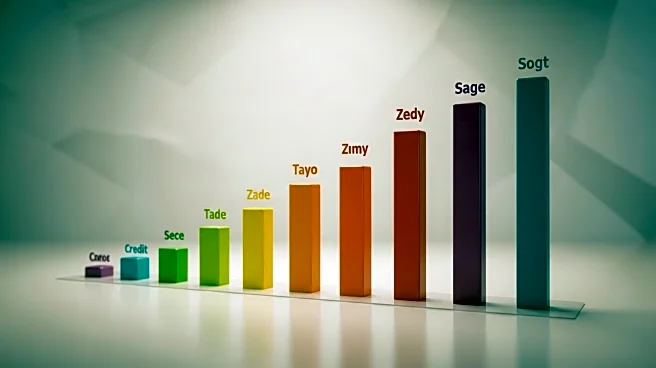What's Happening?
The total amount of credit card debt in the United States has recently surpassed $1.21 trillion, with average credit card balances reaching approximately $8,000 per borrower. This financial burden is causing significant stress for millions of Americans, affecting daily decisions such as grocery shopping and retirement savings. To address these challenges, various strategies have been proposed to help individuals manage and reduce their debt. These include the snowball and avalanche methods, which prioritize debt repayment based on size and interest rates, respectively. Additionally, credit counselors offer personalized support to create realistic repayment plans, often consolidating multiple payments into a single monthly obligation with lower interest rates. Other strategies involve negotiating with creditors for lower rates, utilizing low-rate borrowing offers, and leveraging technology through apps and online platforms to streamline debt management.
Why It's Important?
The rising levels of credit card debt have significant implications for the U.S. economy and individual financial stability. High debt levels can limit consumer spending, which is a critical driver of economic growth. Moreover, the stress associated with managing debt can impact mental health and overall well-being. Effective debt management strategies can alleviate these pressures, allowing individuals to regain control of their finances and contribute positively to the economy. By reducing interest payments and consolidating debts, borrowers can free up resources for other essential expenses, potentially boosting consumer confidence and spending. Additionally, the use of technology in debt management can provide more accessible and efficient solutions, helping individuals navigate their financial challenges more effectively.
What's Next?
As credit card debt continues to rise, it is likely that more individuals will seek out debt management solutions. Financial institutions may offer more competitive balance transfer offers and interest rate reductions to attract borrowers looking to consolidate their debts. Additionally, advancements in technology could lead to the development of more sophisticated tools and platforms for debt management, providing users with enhanced capabilities to track and manage their financial obligations. Policymakers may also consider measures to address the underlying causes of rising debt levels, such as promoting financial literacy and responsible borrowing practices.











